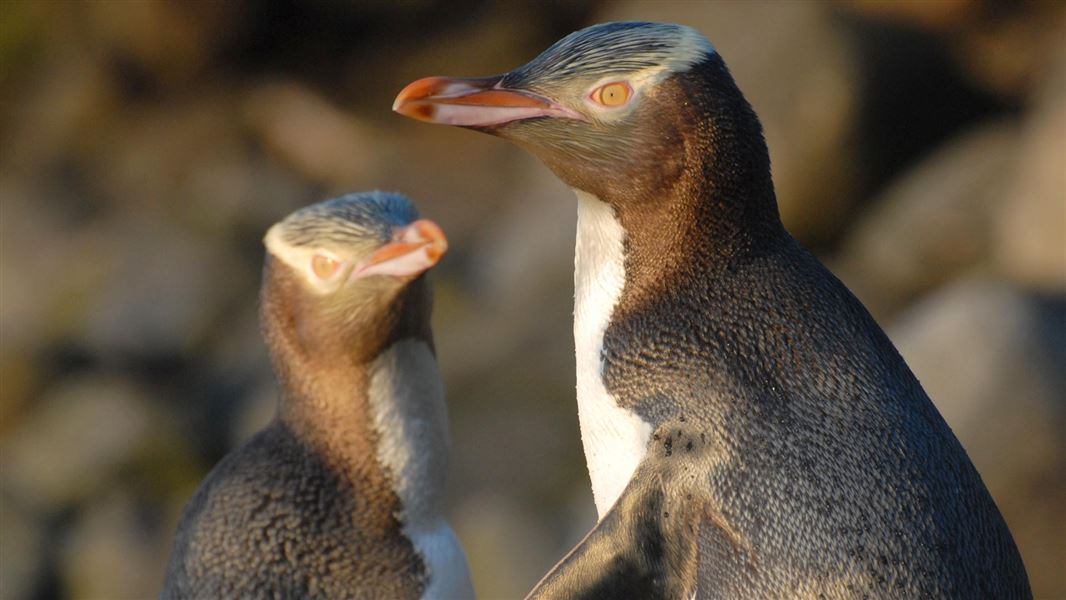Archived content: This media release was accurate on the date of publication.
Date: 06 August 2021
Hosted by the Yellow-eyed Penguin Trust (YEPT) and DOC, the Yellow-eyed Penguin Symposium is held annually in Dunedin.
As co-organiser of the symposium, the Trust is delighted to welcome the community to the thirty-second event, says Sue Murray, YEPT General Manager.
“Held since 1990 the symposium has grown to support kaimahi to understand the complexity of the conservation of this taonga, and to build the community through sharing their results.”
In August 2020, DOC, Te Rūnanga o Ngāi Tahu, YEPT and Fisheries New Zealand released Te Kaweka Takohaka mō te Hoiho - a strategy to support the health of hoiho (PDF, 12,900K) and Te Mahere Rima Tau - a five-year action plan (PDF, 495K). In the past year, implementation of this plan has started in a combined effort by government, iwi, NGOs and rehabilitation groups.
The event is the opportunity for DOC, the Trust, Ngāi Tahu, Fisheries New Zealand, rehabilitation and community groups and researchers to report on what they have accomplished for hoiho and progress made against actions in the five-year action plan over the past year. Work includes:
- expanding management across all hoiho nesting sites;
- an up-to-date inventory of nests on Rakiura; and
- intensifying management to reduce the impacts of disease on small chicks and the effects of starvation on moulting adults.
“Because they inhabit both land and sea, hoiho face a range of complex threats, which are difficult to manage,” says DOC’s Marine and Coastal Species Liaison Officer Chris Page.
“Actions for the year ahead include deepening our understanding of marine threats and how these can be reduced, and further research to investigate the impacts and causes of disease - ultimately improving our management responses to disease. There will also be increased intervention and rehabilitation for nesting penguins and chicks on Rakiura.”
Threats to hoiho include disease, predators, dogs, human disturbance, fisheries interactions, climate change and habitat modification/loss.
“Work to save them needs to be collaborative and look across the full range of challenges facing this much-loved New Zealand bird,” says Chris Page.
“The symposium makes an important contribution to this work.”
Background information
Unique to New Zealand, the hoiho, or yellow-eyed penguin, is thought to be one of the world's rarest penguin species. There are two distinct hoiho populations: the northern population breed on mainland New Zealand – from Banks Peninsula down to Rakiura and outliers; and the southern population breed on the sub-Antarctic Auckland Islands.
Final 2020/21 nest survey results, to be shared at the symposium, indicate hoiho/yellow-eyed penguin numbers across the New Zealand mainland (including Stewart Island) have declined by about 70% over the last decade.
In addition to operations work and baseline biodiversity funding, DOC has allocated $220,000 over three years (2019–2021) for hoiho conservation projects. These additional funds are, among other things, for research into disease affecting hoiho throughout their range; and monitoring of hoiho on Rakiura and the Subantarctic Islands - aligning with priority actions in the strategy and five-year plan. DOC works in partnership with the YEPT, Fisheries New Zealand and Ngāi Tahu to deliver this work.
Contact
For media enquiries contact:
Email: media@doc.govt.nz
